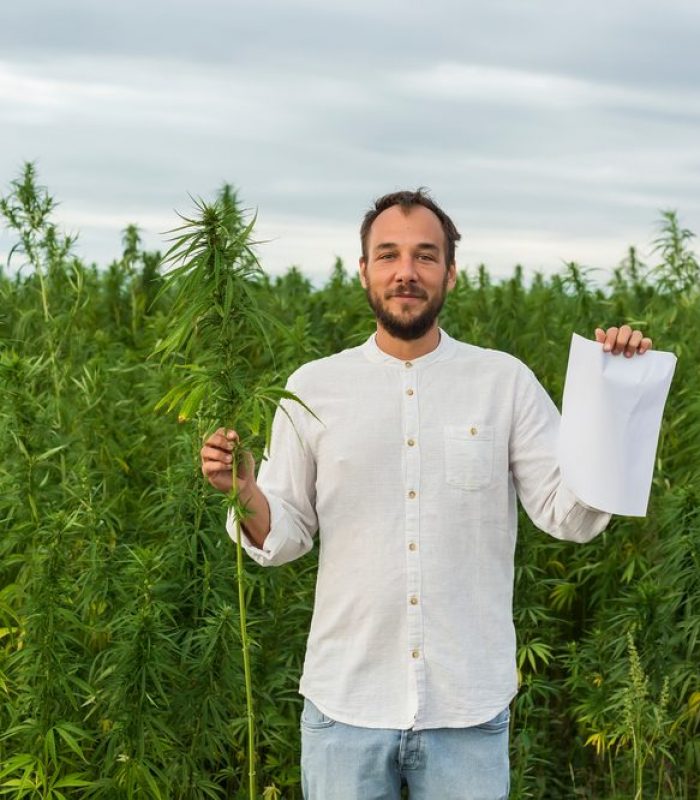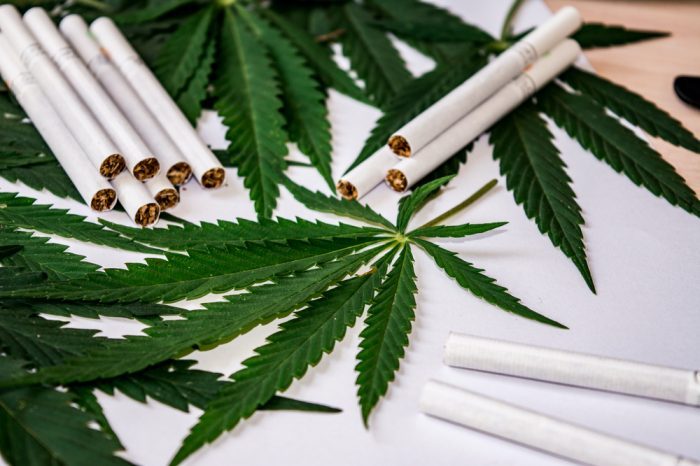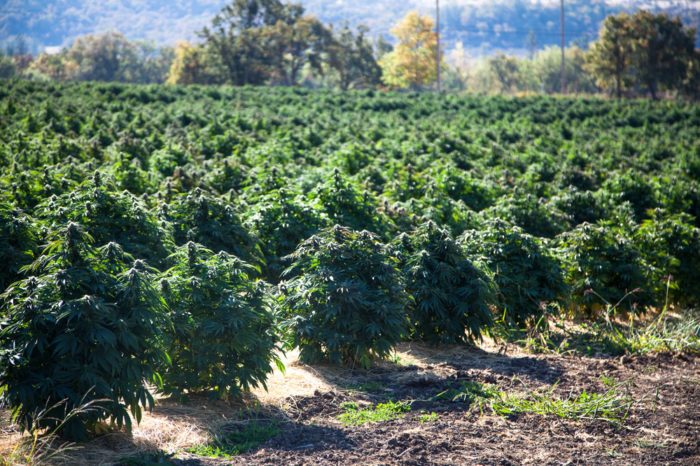Growing hemp for CBD can be a delicate thing. Any plant stress can tip it over the 0.3% THC and the whole crop is mowed down.
By law, hemp cultivators growing for CBD must produce a plant with THC content of 0.3 percent or less. Those that go beyond the limit are in possession of illegal cannabis. With a consequence like that, it’s the fine balancing act of controlling plant stress that keeps hemp farmers awake at night.
Editor’s Note: December 2nd 2019. The United States Department of Agriculture (USDA) has since suggested a number of new, interim rules about hemp. These take effect while more permanent rules are in the works. The biggest change of the new rules is that they would decriminalize hemp plants with up to 0.5 percent THC. However, hemp plants between 0.3 percent and 0.5 percent still need to be destroyed.
The Difference Between Cannabis and Hemp
Hemp is basically a variety of the cannabis plants with negligible amounts of present THC. What hemp plants lack are the large dense buds and sticky resins found on the cannabis plant. From a legal perspective, hemp can contain no more than 0.3 percent THC. This means it’s of no use to those chasing a recreational cannabis experience. Rather, its actual uses are wide and varied. Cultivators are growing hemp for CBD, its stalks, fibers, and oils. And the end products result in things like rope, clothes, soap, paper, protein powder, fuel, and of course CBD oil.

How is Hemp Tested By the Authorities?
When the hemp plant begins to flower, it’s the farmer’s responsibility to notify the authorities and have it tested. Testing will then generally occur three to five weeks into flowering. To carry out the test, they remove several inches from the top of each variety of plant. Once tested, if found to be above the 0.3 percent threshold, farmers can either destroy their crop, or have the hemp retested for an additional fee later in the season.
Hot Hemp
The legal limit of 0.3 percent THC puts enormous pressure on cultivators, especially those managing large operations. If found to be above the legal threshold, destroying or confiscating the entire crop is the outcome. Sadly, for some farmers, this may involve tens or hundreds of acres of crop. The government shows little mercy as in such cases, with THC levels exceeding the legal threshold, farmers are deemed to be growing illegal cannabis.
When the THC content in hemp exceeds 0.3 percent, it’s known as “hot hemp” or a “THC spike.” Those unlucky enough to have high-yielding THC hemp must simply mow it down. If they don’t sacrifice the entire crop, they face prosecution.

What Causes THC Spikes in Hemp?
There are a few factors that can cause a THC spike in a hemp plant. Working with new seed, the growing environment, weather conditions, or overly-long flowering periods.
At a more fundamental level within the soil, many blame excess levels of nitrogen for THC spikes. These claims remain unsubstantiated however and many experts disagree with the notion. Dr. Keith Edmisten from NC State University brought the idea of hemp plant stress to the forefront. High THC values in hemp appear to be heavily tied to plant stress. And while there are many factors involved in plant stress, the simple things like too little or too much water, pests, and an unbalanced soil microbiology are often responsible.
Also suspected of being a culprit in THC spikes is a lack of growing expertise in this emerging field. Many people see hemp as a plant that practically grows itself. But it still remains susceptible to diseases and pests, and still requires water and nourishment. Much of the hemp that runs hot tend to happen because of a lack of experience in working with the plant. After all, it has been generations since it was grown commercially. And 60 years of prohibition has resulted in some lost knowledge.
What are the Problems Facing Those Growing Hemp for CBD?
With so many factors at play in hot hemp, it can be stressful for growers. Especially since much of it is beyond their direct control. A report published by the NC Department of Agriculture and Consumer Services in 2018 stated that “fourteen out of one hundred and thirty five industrial hemp samples collected by NCDA&CS Plant Industry staff tested above the 0.3 percent THC limit.” That’s a failure rate of just over ten percent — a substantial risk to take on for any budding hemp grower.
Another major issue faced by hemp growers was the inability to purchase crop insurance to mitigate the risks associated with THC spikes. However, earlier this year the USDA announced insurance coverage for hemp starting in 2020 — something that will come as a great relief to hemp farmers across the U.S..

Industrial Hemp: What Are the Common Uses?
The recent boom in cultivators growing hemp for CBD means that it’s an important contributor to the CBD industry; an industry projected to be worth as much as $16 billion by 2025 in the US alone.
One of hemp’s primary advantages is that of being one of the fastest-growing agricultural crops. Harvesting can take place within four months of planting. Its cultivation is clean. It requires few pesticides and exhibits little topsoil erosion. In addition, it’s easily harvested and requires less industrial processing that leads to less environmental impact.
The demand for hemp shows no signs of slowing. The ever-increasing needs of industries such as food and beverage, cosmetics, personal care products, and protein supplements are the main drivers with much predicted future growth.

Growing Hemp For CBD
With little risk of intoxication, hemp is in many ways the ideal way to medicate for those looking to benefit from the wonders of cannabis sativa. Depending on the concentration CBD’s medicinal effects can treat a host of conditions without any associated intoxication.
One treatable condition with solid science behind it is skin health. The oil extracted from hemp seed is extremely high in a host of nutrients especially useful for promoting skin health. The range of vitamins and associated fatty acid profile helps maintain healthy skin among many who experience frequent breakouts.
A study published in Pharamcognosy Review (2014) analyzed how plants can benefit skin health. The study concluded that the useful properties of hemp with regard to skin health exist thanks to the fatty acid profile in the extracted oil.
Perhaps more common however is the use of CBD to treat pain. Medicinal cannabis has received much positive press for its ability to relieve patients from chronic pain. The associated side effect for many though is the psychoactive properties resulting from THC consumption. With this variable eliminated in hemp use, the natural CBD content in hemp can help in pain relief without any associated intoxication.
Hemp: A Key Player In a Booming Industry
We’re all bound to hear a lot more about this magical variety of the cannabis plant in the future. With its abundant uses, quick grow time, and lack of intoxication, there’s little that the powers that be can do to stop its spread.






Walter Schwenk
Making hemp salve by extracting from flower into hot coconut oil. Helping with MANY more health issues that this article ventures. Similar effects by simply incorporating the flower material into other foods, such as pancakes, scrambled eggs, etc. How it is useful will depend on which area of the body needs attention, and which end of the gastro-intestinal tract is closer to the problem area (food intake vs suppositories).
Tony Glock
The CBD Flower/Bud I purchase online tends to have large dense buds with sticky resins and Trichomes. In fact it is indestinguishable between the CBD Flower and most Recreational Marijuana cuz they look and smell exactly the same and it contains THC levels less than 0.3%.